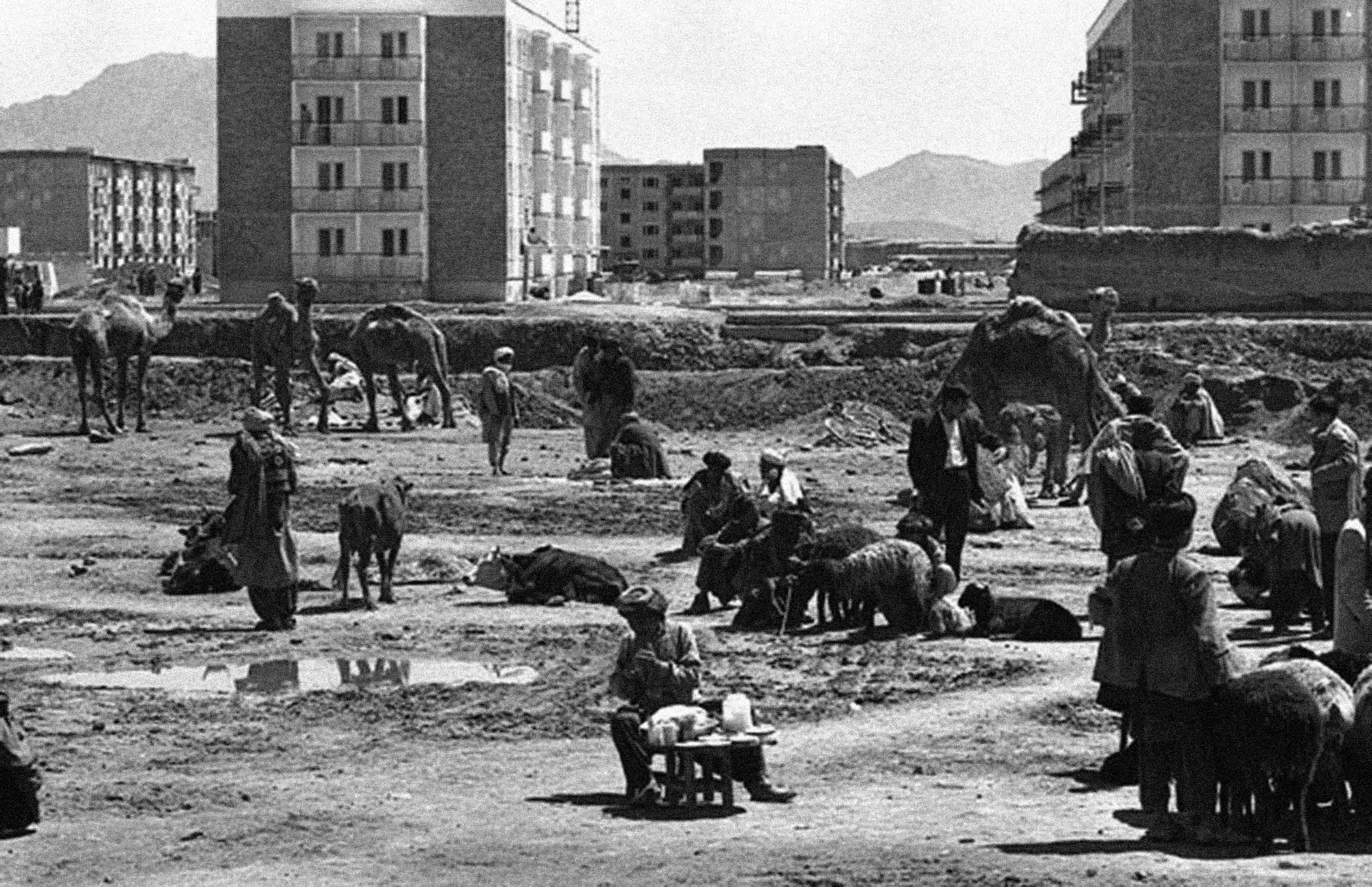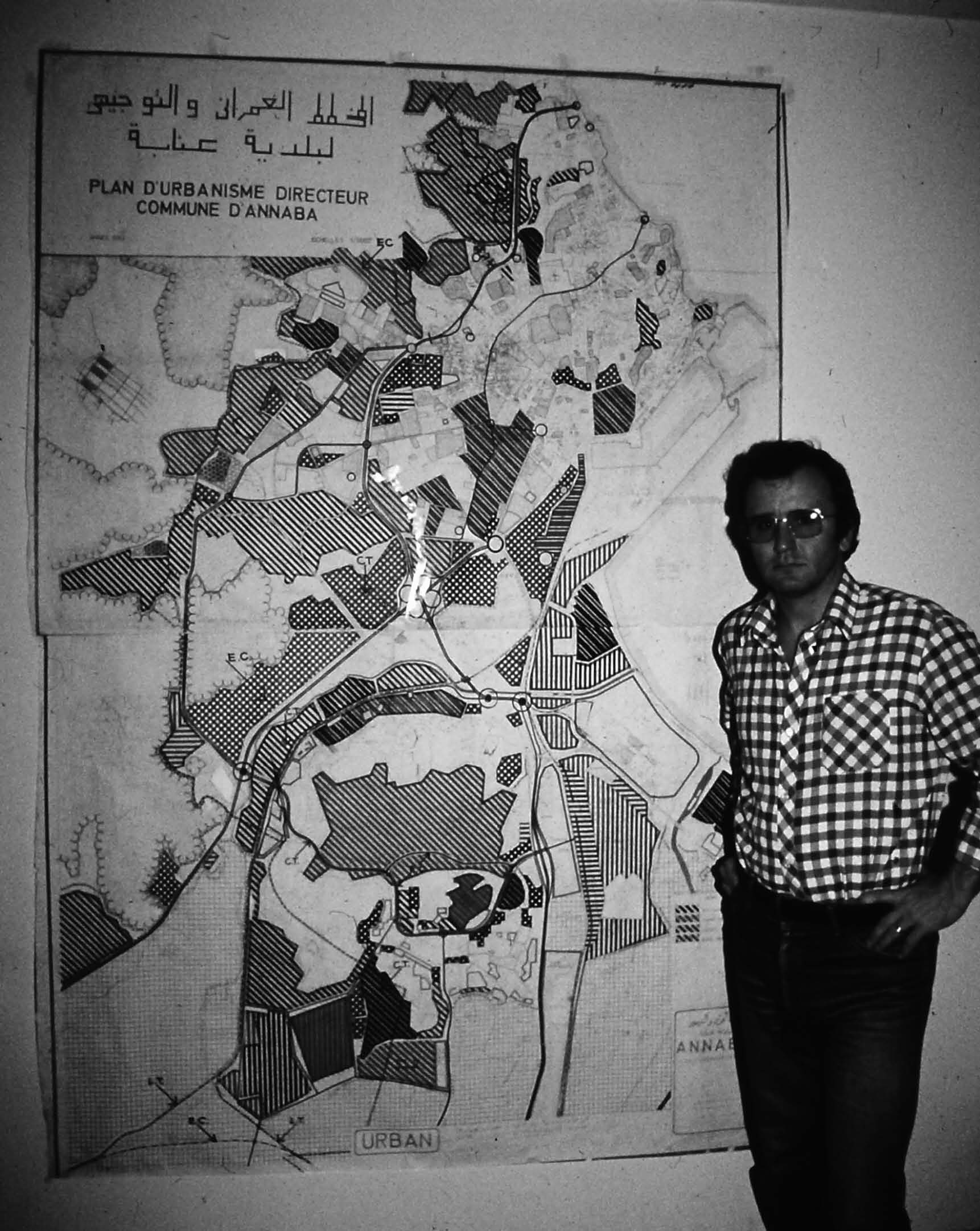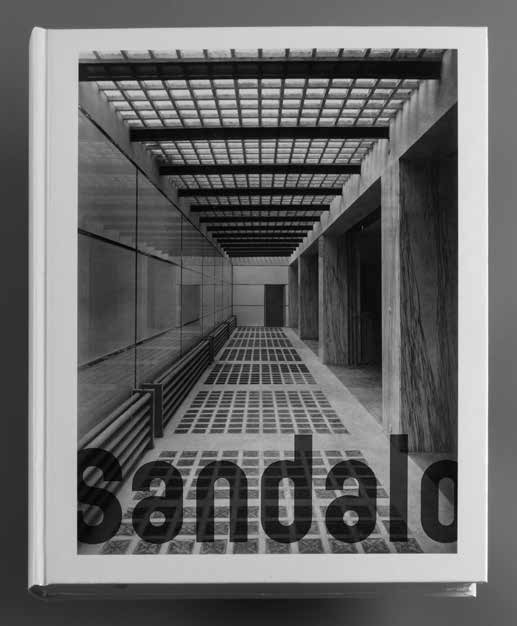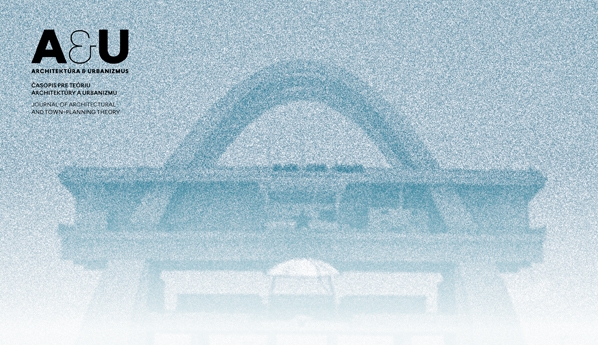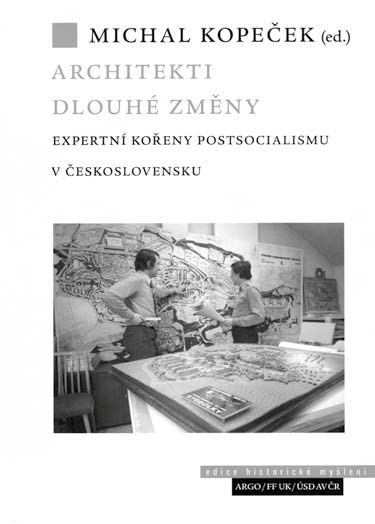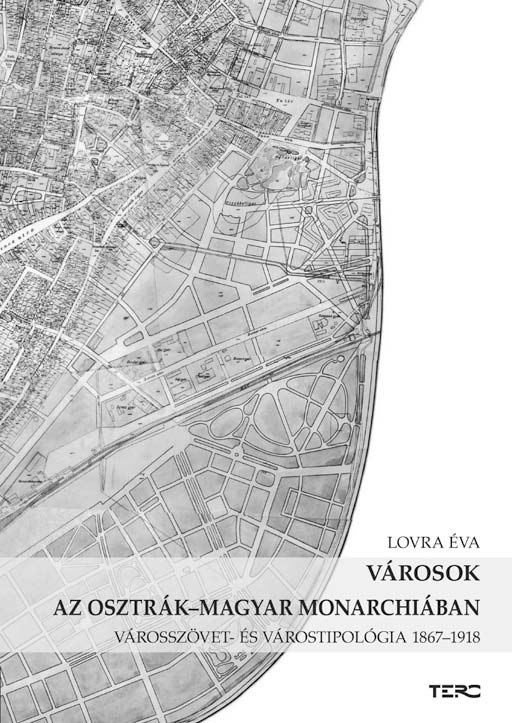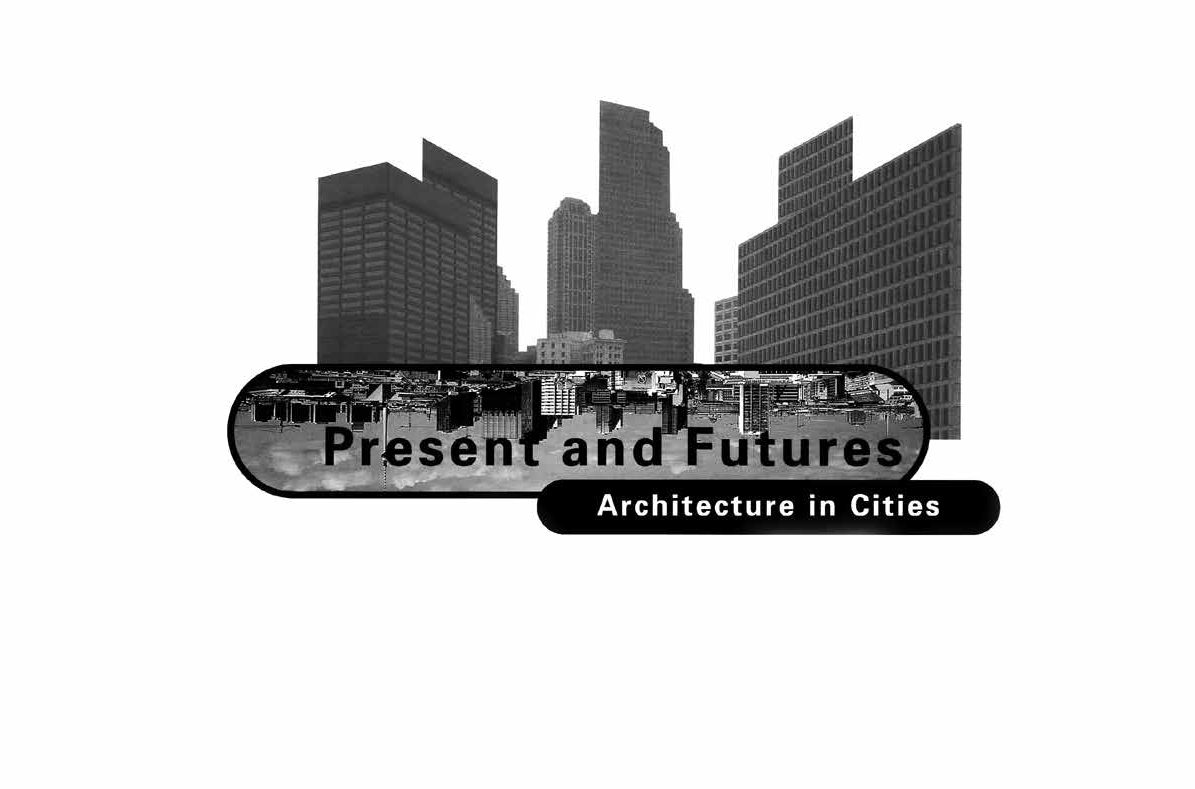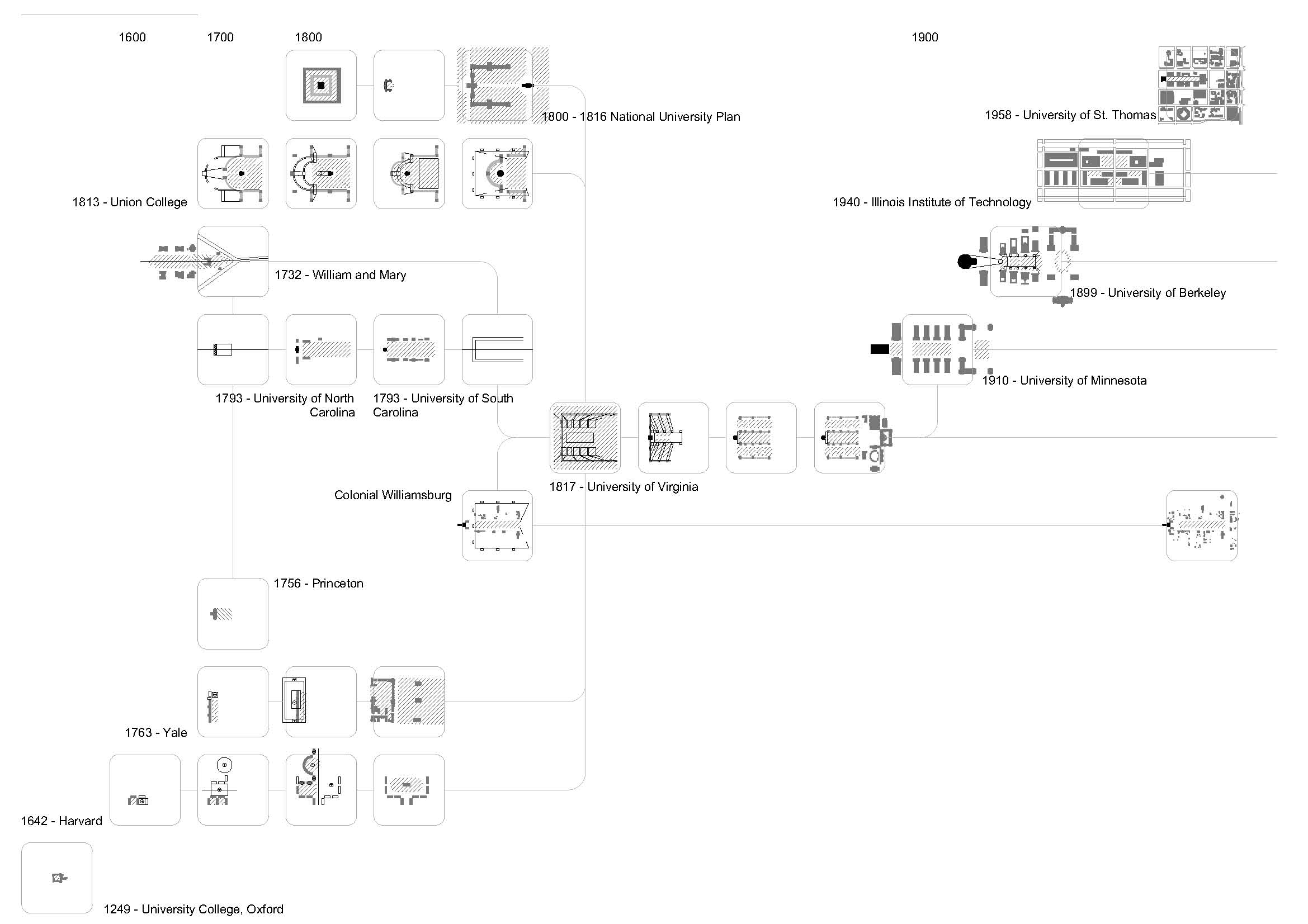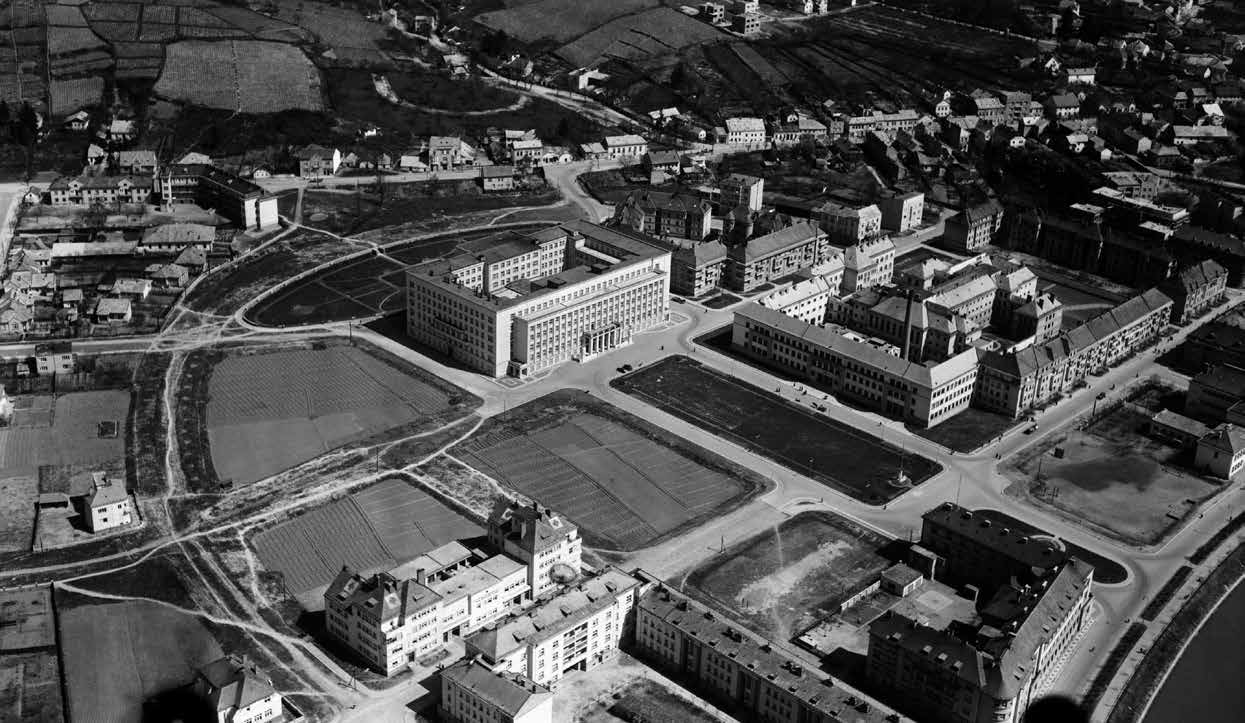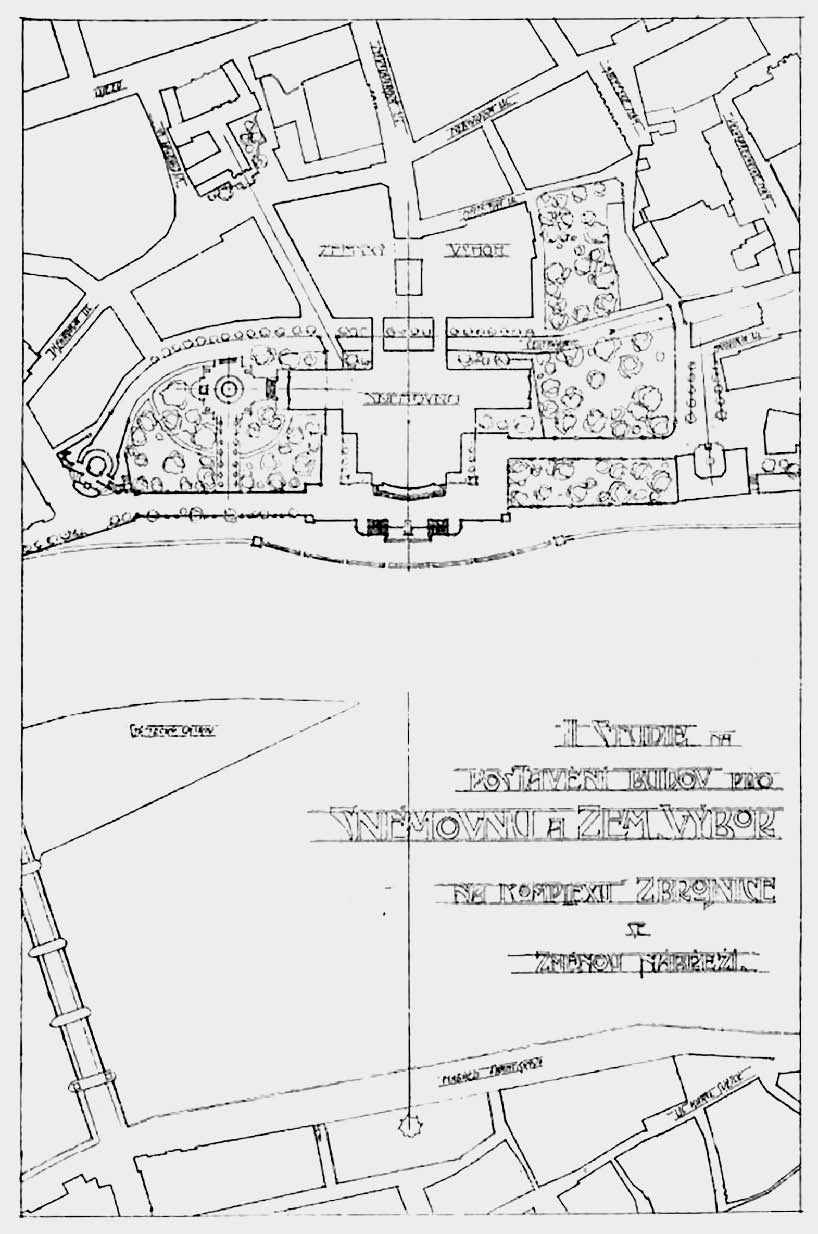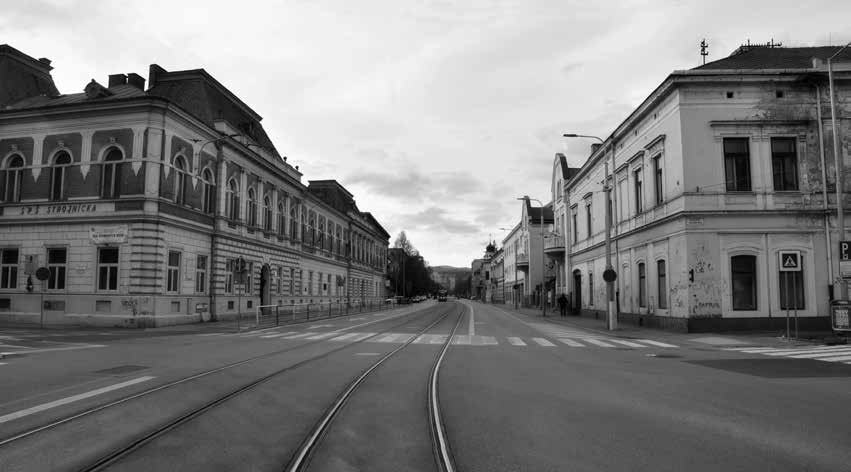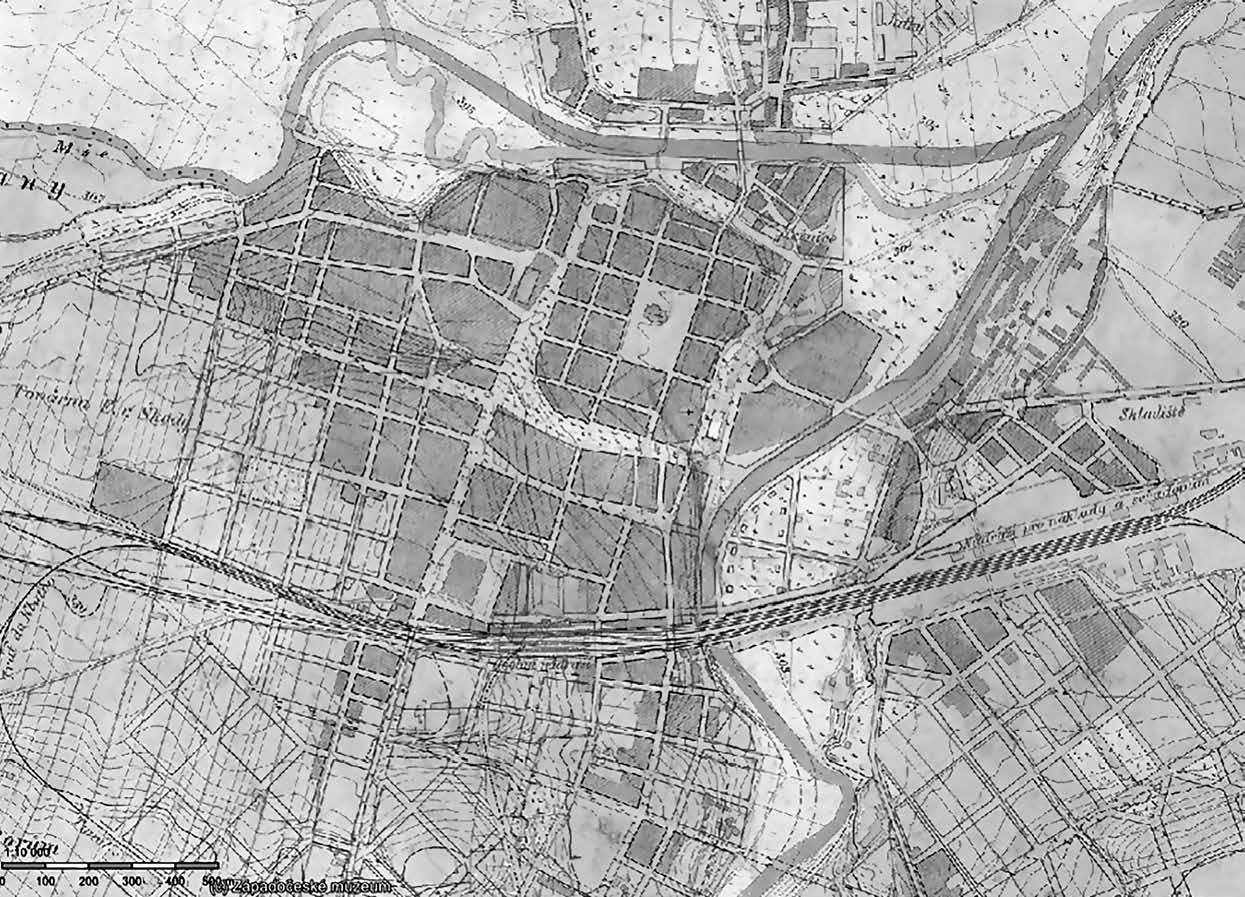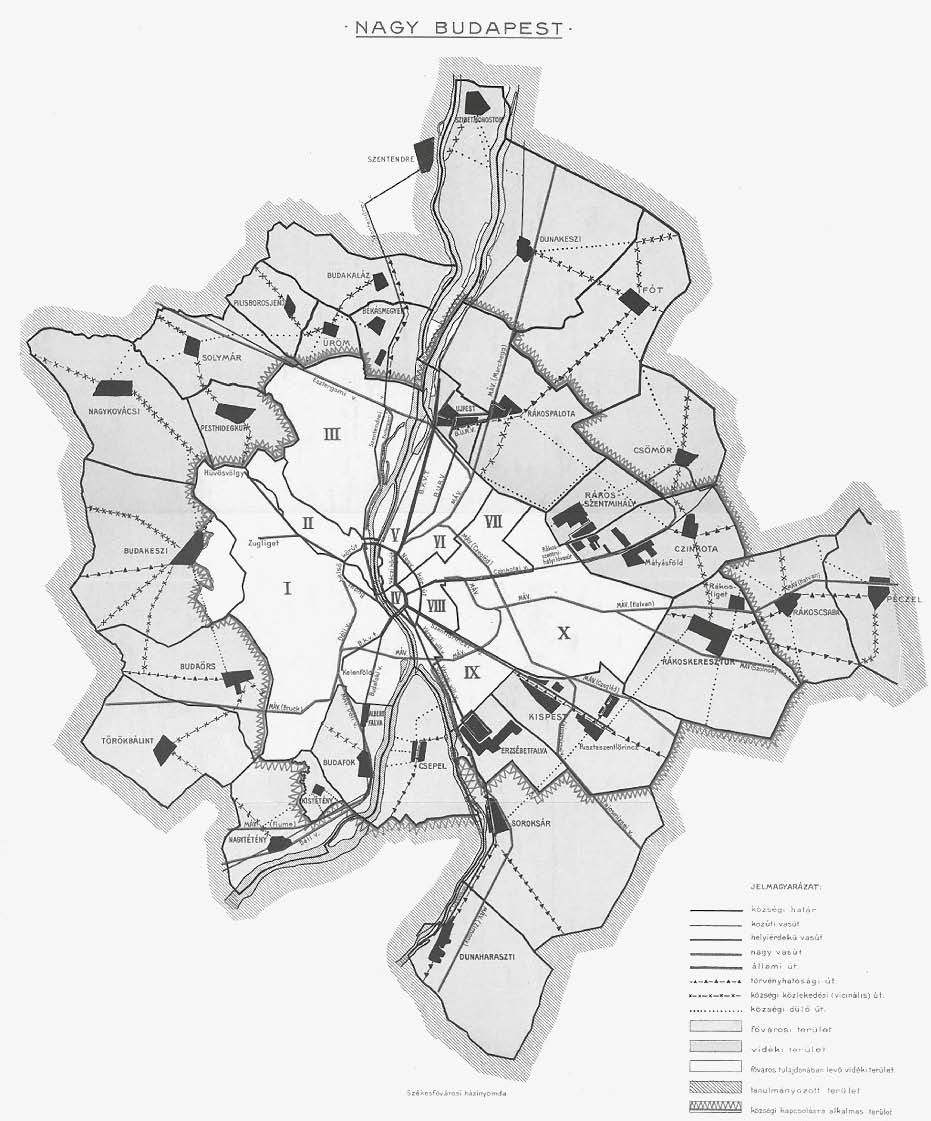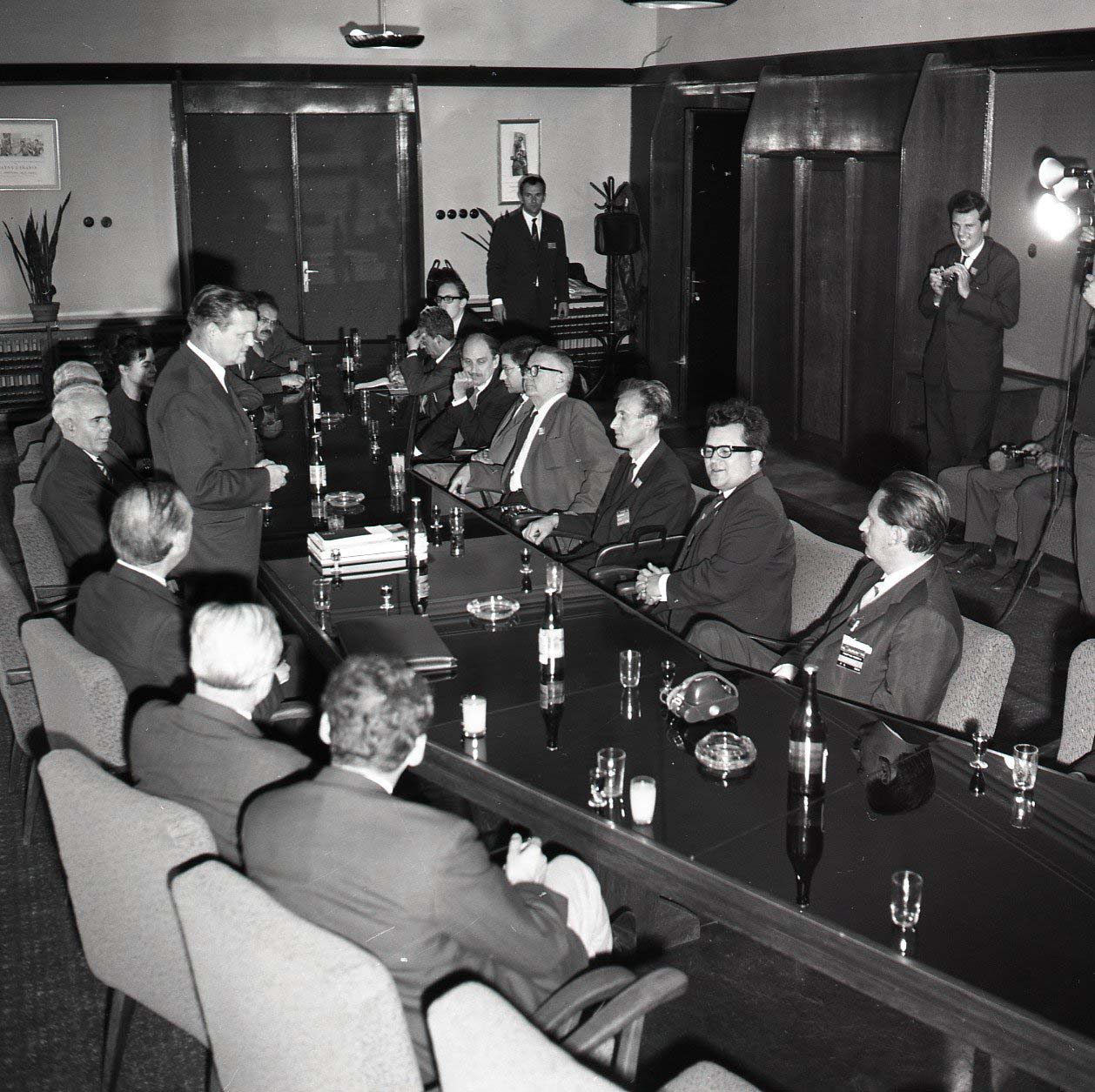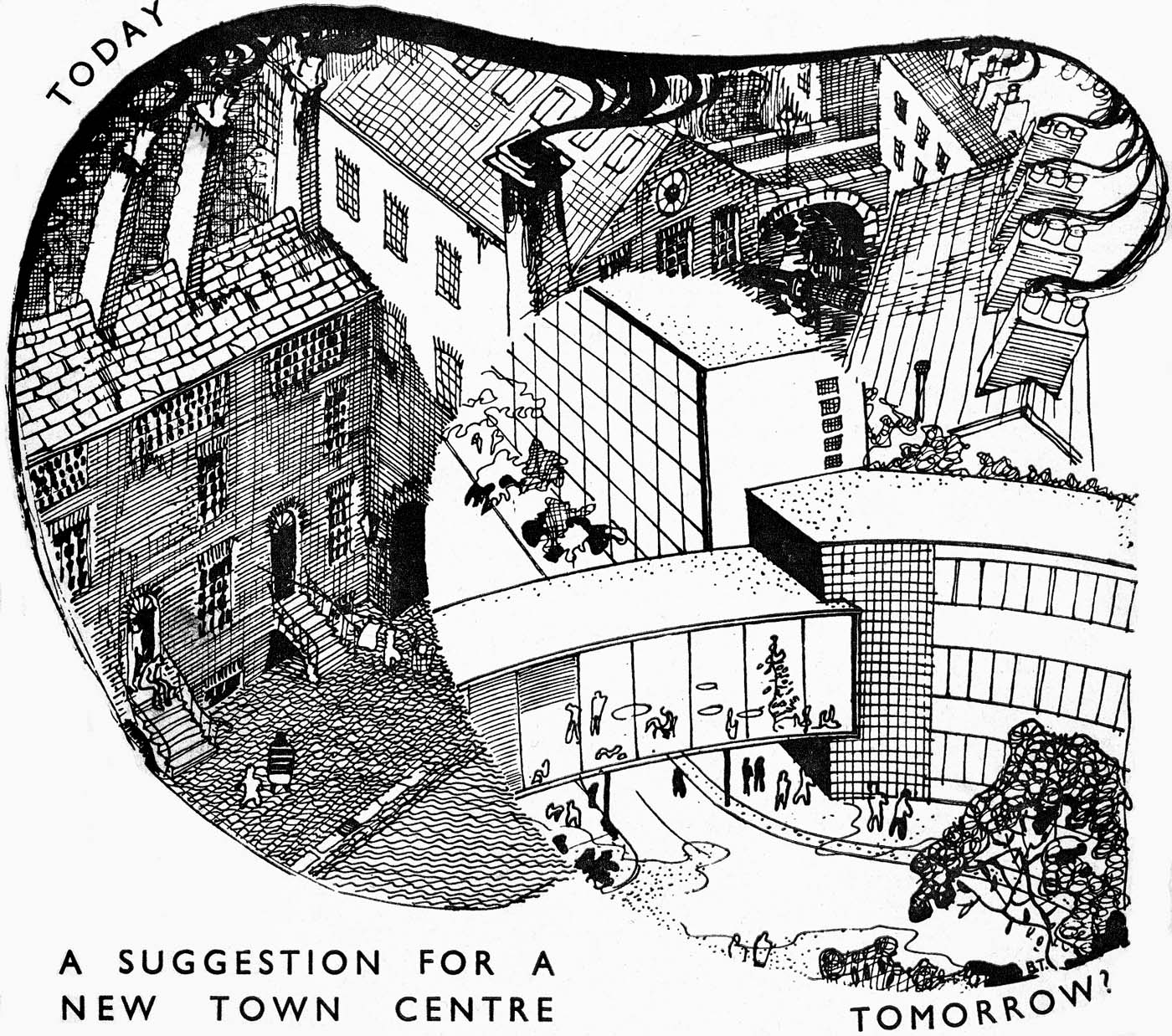In the period of the 1970s and 1980s, many international experts worked in Algeria and other African states. Among them were urbanists and architects from Slovakia, who mostly worked for the institution CNERU (Centre National d´Études et de Réalisations en Urbanisme), involving work in several cities such as Bedjaia, Blida, Colea, Sétife etc. These experts addressed the preparation of new residential districts, urban studies and land-use plans, drawing on the UPN working method in standard use in Slovakia. During the early 1980s, one of these teams also worked on the directive plan of Greater Algiers, forming one of the greatest achievements of the professional activities of Slovak urban planners in Algeria.
Author: Peter Szalay
Slovak Architects and Algerian Cities in the 1970s and 1980s – Historic Heritage, French Urban Planning and Czecho-Slovak Urban Interventions
In the period of the 1970s and 1980s, many international experts worked in Algeria and other African states. Among them were urbanists and architects from Slovakia, who mostly worked for the institution CNERU (Centre National d´Études et de Réalisations en Urbanisme), involving work in several cities such as Bedjaia, Blida, Colea, Sétife etc. These experts addressed the preparation of new residential districts, urban studies and land-use plans, drawing on the UPN working method in standard use in Slovakia. During the early 1980s, one of these teams also worked on the directive plan of Greater Algiers, forming one of the greatest achievements of the professional activities of Slovak urban planners in Algeria.
Sandalo’s Exceptional Depth of Sharpness
DAGMAR ČERNOUŠKOVÁ, JINDŘICH CHATRNÝ, ANNA PIKOUSOVÁ, JIŘÍ PIKOUS A LUCIE VALDHANSOVÁ
VIZE MODERNOSTI RUDOLF SANDALO (1899 – 1980) / VISIONS OF MODERNITY: RUDOLF SANDALO (1899 – 1980)
2020, Brno: Muzeum města Brna, 509 p.
ISBN 978-80-86549-59-0
Export/Import of Modern Town Planning Principles
Urban planning of the 20th century, especially in countries under authoritarian regimes, has left behind significant traces in the urban environment as well as in the countriesʼ landscapes. It wasa turbulent period when the policies of often-shifting political orders could easily change from one day to the next, along with the preferred approaches of urban planning and development, while at the same time the efforts towards technocratic progress and national development clashed (often aggressively) against local customs and traditions.
The aim of this thematic issue is to point out the parallels and, at the same time, the differences or peculiarities of the results of modern urban planning in different regions, with an emphasis on identifying the influences highlighting local and regional (urban, state and national) impacts that have translated into specific reflections of global modernity. The topic is discussed across several layers – from the definition of the basic principles and differences of the systems of developing and developed countries, the identification of the role of “exported” impacts on local specifics and, of course, the role that education influences the further careers of architects and urban planners.
In the context of the Central European region, the topic of “export” of this specific local approach on architectural and urban design in other countries is still little known and neglected in research. However, it was Eastern Bloc countries that encouraged the participation of their engineers, architects, and other technical staff in the preparation of various construction projects in the transforming post-colonial regions, especially in Central Asia and Africa. The export of project work lay fully within the intent of “strengthening the importance of international coordination of the management of the economies of socialist countries”. This cooperation was regarded as an aid to developing countries, but also spread the reputation of socialist architecture, technology and its politics.
The issue discusses the development of urban planning in Central European region in the contribution of Kateřina Čechová on the modernization of the Gründerzeit city in Prague. Particular emphasis is placed on the experience of which Czechoslovak experts influenced the development on the African continent, which is discussed in the paper of Ľubica Vitková and Michal Bogár using the case study of Algeria. Jelica Jovanović discusses the impact of the popular Yugoslavian construction system IMS Žeželj up to the largest architectural scale of the Yugoslav experimental project in Angola. This situation of the Cold War era and its reflection in urban form is treated in greater detail further on using the example of the development of the city of Kabul, discussed in the contribution of Katarína Smatanová and Mirwais Fazli which addresses the case of Afghanistan. An example from a similar region, but stemming from the opposite principle – of independent political and professional know-how – is analyzed in the contribtion of Nevin Turgut Gültekin on the case study of Ankara. Rita Karácsony and Zorán Vukoszávlyjev illustrate the role of educational institutions and the integration of students and architects of Hungary’s emigrant ‘56 generation who settled in Western countries.
The Power of Experts: Continuities or Ruptures before and after 1989
MICHAL KOPEČEK (ED.)
ARCHITEKTI DLOUHÉ
ZMĚNY EXPERTNÍ KOŘENY
POSTSOCIALISMU
V ČESKOSLOVENSKU
2019, Praha: Argo, 374 s.
ISBN 9788025728086
Pattern Recognition
ÉVA LOVRA
VÁROSOK AZ OSZTRÁK-MAGYAR
MONARCHIÁBAN VÁROSSZÖVETÉS
VÁROSTIPOLÓGIA 1867 – 1918
2019, Budapest: Terc
ISBN 9786155445651
The legacy – Ignasi Solà-Morales and the contemporary urban debate
The present paper, encompasses theoretical reflections on urban condition;as well as new possibilities for the transformations of the contemporary city.The debate on the contemporary urban condition is undoubetebly today composed of multiple thoughts, namely the organization of the city as a network, its characteristic impermanence, the ubiquity of vision, mobility and digital communications, and so forth. The debate is also composed of other developments, focusing on preservation of heritage or the paradigm of creative cities. Nevertheless those discourses that , at the end of the 20th century, seeks to address the directions that the urban realities has been shifting towards, recall to a large extent Ignasi Solà-Morales pioneering prognostics. In fact, the work of Ignasi Solà-Morales constitutes a inspiring legacy, since he outlined one of the most notable and insightful theoretical cartographies of contemporary metropolitan and architectural condition. A complex architectural thought process, consisting in a selection of categories in which only a provisional interpretation of a contemporary city can be based The work will be structured in two parts. The first part revisit thr work of Ignasi Solà-Morales’, alluding to some of the ways of perceiving the urban condition that he offered is his work. A second part encompasss some of those aspects of urban culture that are relevant to the contemporary urban debate.
Creative Transformations: the Campus Paradigm
Large swaths of land on the fringe of metropolis are now undergoing transformation into a landscape of big boxes devoted to storage, logistics, or manufacture. On the other hand, close to specific cities, such as Paris or Moscow, strengthening support of the innovation economy has fueled the rise of research and development sites. Often simply labelled with the term “campus“, they emulate the archetype of an academic setting. Is the reference just a metaphor, or does it convey a specific spatial organization?
Urban Planning and Construction of the Interwar City of Uzhhorod: Mission Interrupted
After Uzhhorod became the administrative centre of Subcarpathian Ruthenia, the city gained a unique privilege – to become its capital at the time of development of modernism. The administrative and residential part Maly Galagov, which was created as a result of the gradual implementation of the main regulatory plan from 1920–1923, became the new core of the city. The sights of other eras had not been destroyed in order to build the infrastructure of the capital, making this project unique on the map of urban solutions in the interwar Europe. However, some concepts could not be realized due to changing economic and political circumstances. The rapidly growing city required construction of new residential districts and infrastructure, the projects of which had been designed by the best architects of Czech, Slovak and local origin. The aim of the study is to create a more complete picture of the unrealized potential of Uzhhorod, the development of which was halted in 1938 as a result of the collapse of the Versailles system.
The Parliament for Prague – Proposals, Competitions and Debates on its Location and Architecture
Prague. The metropolis of the Czech lands and since 1918 also the capital of independent Czechoslovakia. As such, it has often become a place for ambitious architectural and urban visions, which did not always materialize. Since the end of the 19th century, one of the most discussed locations in Prague has been the Letná Plain, and the most closely monitored task was apparently the construction of a new seat of the regional government, later the parliament of the new republic. For a time, the two topics merged in one, resulting in a range of projects created by generations of architects striving to enrich the Prague panorama and create a worthy symbol representing the state, its nation, and political discourse. The paper is going to demonstrate the variety of these projects and try to answer the question of why this architectural Odyssey did not eventually leave any mark on the Letná Plain.
The Komensky Street in Kosice –The Story of an Avenue of the 20th Century
Regulatory plans of the city of Kosice as we know them today were first being created at the end of World War I. The plans are bound to important political events such as changes in state formations, post war reconstruction, transition from capitalism to socialism, forced socialist industrialization and various forms of socialist establishment until its final collapse. New regulatory plans always reflected the current political situation and were often contradictory to their preceding plan. The northern part of the city, the Komensky street and its surroundings is one of the few areas, where all the periods of development can be seen. It is a mosaic of unfinished designs which despite being incomplete creates a harmonious whole. The study examines chronologically the development of the district according to citywide regulatory plans, documents the advancement of urban thinking, building typology as well as stylistic characteristics of architecture until the last decades of the century, when the area was finally built up.
Planning of Bohemian regional centres in the period of their industrialisation and modernisation: Pilsen and Hradec Králové
Almost all towns in Central Europe north of the Danube were laid by a planned foundation, mostly in the 12th to 14th centuries. They retained the original extent and spatial structure until the industrial revolution. Only then some of them faced the challenge of unpreceded growth. So that this growth could be managed, city administrations found useful the tool of town planning. Thanks to planning, the cities have not only been able to grow dramatically, but also to equip themselves with a number of technical infrastructures, civic amenities and public buildings. The introduction of town planning was a learning process, often misleading and leading to dead ends, but its outcomes in the end provided a solid foundation for the development of modern cities in the next 20th century. The paper shows, on the example of two Czech medium-sized cities, how the institutions and tools for their planning developed to manage the growth, under what circumstances the cities were planned and what challenges they faced. It evaluates the legacy the planning of these cities gave us in their current physical layout, important buildings and premises, but also in the urban concept, which often surprisingly follows the visions of city representatives and the ideas of urbanists in the 19th century.
Re-Shaping Budapest: Large Housing Estates and their (Un)Planned Centers
The core of the theoretical reflection is the modern large housing estate as a spatial unit, its subdivision, and center. The comparative study presents Budapest’s 15 large housing estates (with more than 6000 dwellings) realized during the two 15-year mass housing programs between 1960 and 1990. That time, most of the urban land was publicly owned, planned and developed. Although, the city officially was divided into 22 districts and informally it had inherited quarters with various characteristics. How did these large housing estates re-shape the territory of the city? What was the relationship between them and the surrounding quarters? How their centers were (un)planned? What was the relationship between the new modern and the old centers? The research proposes a classification that could be used for a better understanding of actual spatial, functional and development challenges related to modern large housing estates.
Urban Experts in the Building of Post-Stalinist Bratislava
The vast majority of research dedicated to Czechoslovak urban history focuses either on history of ideas (expert visions, debates and projects) or on the final outcomes of urban planning and construction (mostly the realized housing estates). In order to historicize building and governing socialist city in the late 1950s, 1960 and early 1970s, this paper is, on the example of Bratislava, focusing on the dynamics in the broad sphere between visions and realized buildings or infrastructure. That means, on the intersection between expert knowledge and the practice of urban politics. While analyzing strategies and influence of leading architects in Bratislava, it inter alia deconstructs the alleged dichotomy (emphasized by architects themselves and partly reproduced by contemporary scholarship) between urban experts and (allegedly hostile) political power.
British Urban Reconstruction after the Second World War: The Rise of Planning and the Issue of “Non-Planning”
The period from 1940 to the mid 1950s has been widely referred to as a critical period in UK planning, with new legislation, official guidance, and hundreds of plans of all scales produced in the aftermath of wartime destruction. The circumstances of war seemed to favour a top-down, expert-driven process. If this was the high-point of the theoretical activity and practical implementation of urban planning, it soon produced a negative response, with the concept of ‘non-plan’ bring promoted in the late 1960s. This paper reviews the scale, speed and nature of the planning response; how it tested the limits of what could and should be planned; the failure of delivery; and the negative responses leading to reactions against planning.
(Un)Planned City
(Un)Planned City
Questions of planning and regulating urban construction have deeply shaped theoretical discussions and practice in city development as far back as the second half of the 19th century. The city plan, formulated in the sense of the principles of modern architecture and urban design, formed the basis for the construction of Europe’s metropolises. Yet even so, these conceptual documents often were reflected in the actual appearance of these cities to a limited extent, or even diverging from their authors’ intentions. The reasons for this discrepancy between urban planning and actual construction lie, to a large extent, in major social and political changes, yet no less in conflicts of interest between local actors and state power or differing ideas of how a city should be formed. At the same time, these plans were themselves the outcome of the re-evaluation or rejection of the intents and conceptions of their predecessors within the disciplines of urbanism and planning.
The overlapping layers and the incomplete character of modern plans and regulations give the appearance in the urban structure of contemporary cities of being unplanned errors or failures of planning rationality. The term ‘(un)planned cities’ designates precisely these seemingly unintentional spaces and structures in urban entities, which nonetheless we cannot truly regard as either the outcome of chance or of deliberate lack of planning. And the postmodernist critical theoretical discourse, along with the significant expansion of the field of scholarly disciplines and actors entering into the urban planning process on one side, and the rejection of the regulations of the social state, privatisation, internationalisation and the dominance of market logic in actual construction practice on the other, have accentuated the (un)planned nature of modern urbanism. As a phenomenon, it is perhaps most immediately visible in the post-socialist countries of central and eastern Europe. Following the epochs of the first emancipatory modernisation of post-imperial nation-states and then post-war socialist-technocratic modernisation, the rebuilding and expansion of the newly independent urban centres in central and eastern Europe instantly shifted towards a radical liberation from all regulations. As such, the (un)planned city could appear a highly accurate model for describing and interpreting the urbanistic phenomena of post-socialist cities in the region, or even for other European metropolises.
The present thematic issue forms a selection of contributions from the international conference (Un)Planned City, organised as a digital platform by the Department of Architecture at the Historical Institute of the Slovak Academy of Sciences (SAV) in the framework of research project APVV-16-0584 Unintentional City: Architectonic and Urbanistic Conceptions of the 19th and 20th Centuries in the Urban Structure of Bratislava. It forms a collection of scholarly texts investigating modern and contemporary strategies for city planning both from the perspective of historiography and from that of theoretical-critical investigations of architecture and urbanism. Architectural and planning theorist Gonçalo M. Furtado C. Lopes in his text presents a critical reflection of the relationship between architecture and cities formulated at the end of the last century by Ignasi de Solà-Morales. Similarly, the cultural categories of Solà-Morales, imagined on a phenomenological basis, are echoed indirectly in the study by architects Lýdia Grešáková, Zuzana Tabačková and sociologist Zuzana Révészová, who use interdisciplinary mapping of selected areas in the city of Košice to test methods of urban planning that reach beyond the traditional growth paradigm.
Historian of urban planning Peter Larkham presents a surprising discussion of “non-planning” in the background of the post-WWII rebuilding of British cities, which were marked by strict scientific planning that set down methods used in modern urban and land-use planning throughout the world. The theme of power and the influence of experts and their scientific-engineering perspective, which in the post-war years dominated the discipline of urbanism, is analysed by historian Matej Spurný using the example of Bratislava’s development in the 1960s. The rebuilding of cities following Modernist ideas under conditions of socialism is addressed by the study by urbanists Anna Kornélie Losonczy, Regina Balla, Hlib Antypenko and Melinda Benkő, focusing on the construction of prefabricated housing estates and the failed efforts to build suburban settlement centres in Budapest.
Urban planner Karel Maier, using the example of two Czech regional centres (Plzeň and Hradec Králové), analyses the onset of modern urban design in Central Europe, uncovering the determining conditions for the historic development of the urban tissue along with the functional structure of both cities for their future development trajectories. Questions of the influence of state power on building regional centres in the era of inter-war Modernism are reflected by researchers Lina Degtyaryova and Oleg Olashyn using the example of the construction of Uzhhorod as the capital of the Czechoslovak province of Subcarpathian Ruthenia.
The selection of contributions is concluded by studies that make use of urban typological fragments to reveal historic changes to modern cities alongside the potential for their future development. In one case, it is the fundamental component of urban form, the street, that architect Ján Sekan, architectural historian Adriana Priatková and archivist Máté Tamáska discuss through the concrete history of the building of one of the major roadways of Košice, Komenského ulica. Art historian Klára Brůhová, in turn, uses the changes in the localisation and plans of the Czechoslovak Parliament building to analyse changing ideas of Prague’s enlargement as the national capitol. University campuses in the territory of Bratislava, their historic changes and their future potential are the research object of the study by architect Peter Stec.
Mapping with care as an outline for post neoliberal architecture methodologies – tools of the Never-never school
Modernist planning brought us a tradition of producing top-down utopian blueprints of the ideal habitat for the modern man. Decades later, we still heavily practice this tabula rasa planning: importing ready-made images and concepts to fill in seemingly empty places; while the ambition (or necessity) to vision other radical worlds has been significantly weakened by the neoliberal TINA logic. This produces the current condition in which planners are paralysed to imagine alternatives that would allow cities to deal with the complex challenges they face. Interdisciplinary Never-never School experimented with methods to move beyond this state and explored planning as care in the ruins of modernism, while building on its traditions. Our contribution outlines the developed praxis, while speculating about its scaling up and potential translations into different contexts beyond the comfort of the summer scho
